|
Having had the nerve to update the Unlisted in Castenholz censuses for G3’s and C17’s, I will move on to C16’s, and throw in C1a’s, C15’s and C19’s as well. These censuses, taken with the previous one addressing C17, will cover the C instructive clauses used with receipts.
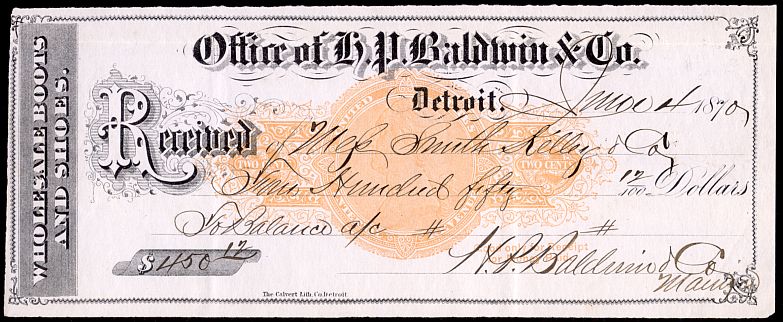 The only known used copy of a C15. (But see Postscript below.)
The only known used copy of a C15. (But see Postscript below.)
C15’s are used only on receipts, and bear the instructional clause “Good only for Receipt for Money Paid” to the lower right of the basic imprint. C16’s use the same clause, but it appears to the lower left of the imprint. C19’s have a slightly different clause, “Good when issued for the / payment of money,” broken between two tablets to the lower right and left sides of the imprint.
Until 1992, C15’s were only known as unused copies from Carter, Fisher & Company of Louisville, two currently known. Speculation was made that they were samples and the design was never actually used, until a used copy from Detroit was discovered.
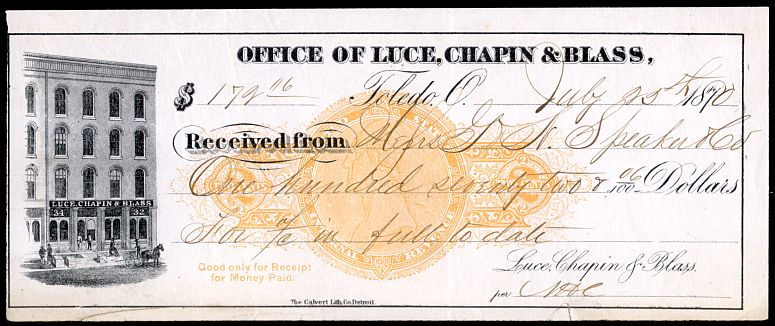 The Toledo C16
The Toledo C16
C16’s are relatively more common (the count of users having gone up from 28 in 1998 to 54 at present), but there is no information as to why American Phototype preferred to supply receipts with the clause on the left side rather than the right. Both versions were delivered in 1870, with the earliest known date for C16 in April of 1870 and the one used copy of C15 dated in June of that year. As the tax on receipts was rescinded October 1, 1870, use of these designs was short-lived.
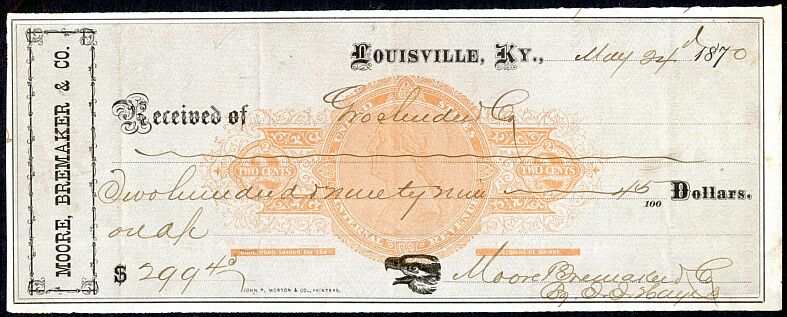 The Kentucky C19
The Kentucky C19
C19’s have never been common, with the possible exception of C19a, the design printed on both sides of William Topping & Company receipts. Four users were listed in the New York volume of the Castenholz Field Guides, and the current census only lists nine users, not counting Topping. They are spread more widely than New York, though, with one user known from Kentucky, one from Michigan and one from Missouri.
C19 was arguably not popular due to the difficulty of reading the small “negative” wording in the tablets if there was the slightest amount of excess ink applied. Its use is not documented before May, 1870.
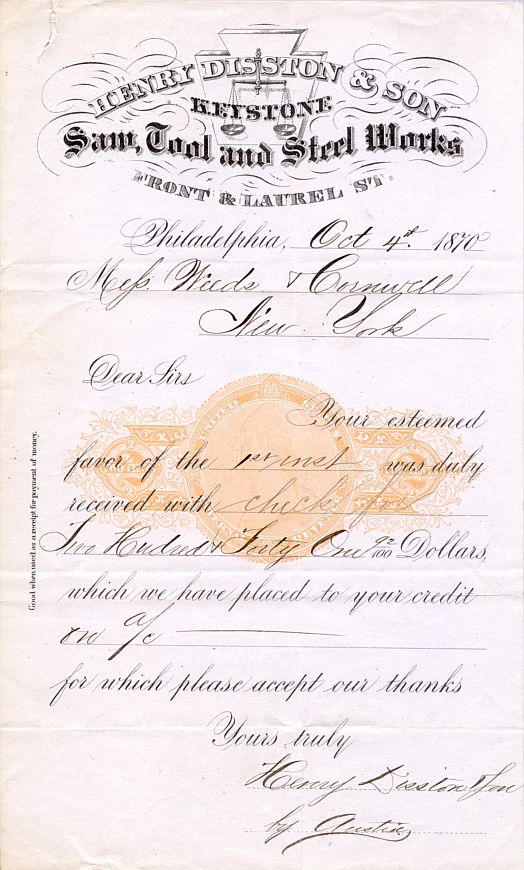 One of the two known C1a's.
One of the two known C1a's.
C1a is an unusual hybrid, with the clause “Good when used as a receipt for payment of money” added by the printer reading upward at the left side of the document. Two copies are known, both used by Henry Disston & Son of Philadelphia.
Ron Lesher explains its genesis as follows: "The last order of receipts to be imprinted for the Henry Disston firm had the required clause placed on the receipt by the printer of the receipts. This was in compliance with government directive and was intended to be sent to the Joseph Carpenter firm for imprinting (who did not at this time print any of the instructive clauses as an integral part of the imprinting process.) However, in this case the receipt was forwarded to the American Phototype Company. Disston is the only known user who supplied receipts with the instructive clause to American Phototype for imprinting."
Look closely at any Disston receipt in your collection. The instructional clause is easy to miss.
The survival rate of receipts contributes to the rarity of these items. With the exception of the two-sided Topping receipts, most were dispersed widely and, unlike checks and certificates of deposit, were not returned to a central location for any reason.
As with all of these surveys, reports of users not already recorded are more than welcome – they are adding to pooled knowledge. All of the surveys will be updated as necessary.
If anyone has a copy of a C15, even one of the types already known, please report that as well. Are there more than the three known?
Postscript
Early in 2013 a second used C15 was discovered in a lot of stocks and bonds, making four copies of the imprint known. This one has an attractive vignette, which is unusual to find on a receipt.
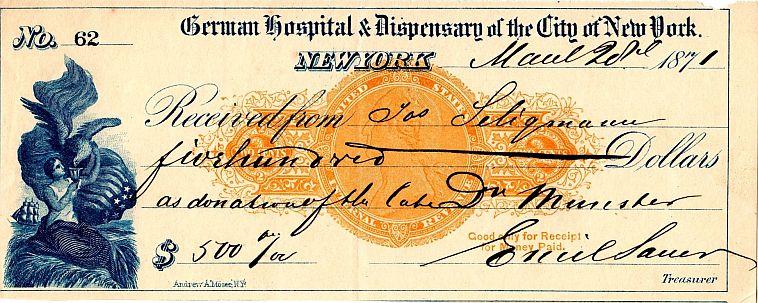
The German Hospital & Dispensary of the City of New York receipt with a C15.
Page back
|